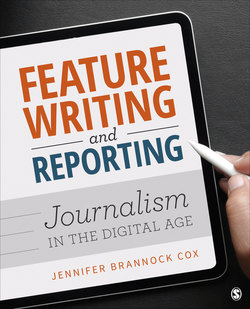Читать книгу Feature Writing and Reporting - Jennifer Brannock Cox - Страница 35
На сайте Литреса книга снята с продажи.
Trust Me: I’m a Journalist Trust in American Institutions 1993–2018
ОглавлениеAmericans’ trust in institutions tends to reflect the general mood of the country. Following the Watergate scandal in 1972, trust in government declined significantly as people became suspicious of their elected leaders. Fears after 9/11 lifted trust in religious organizations to an all-time high in 2001. And news organizations tend to experience dips in trust during presidential election years, which was especially true in 2004 and 2016, as demonstrated by a Gallup poll gauging media trust over the past three decades.13
Figure 1.1 Confidence in American Institutions 1993–2018
Source: Adapted from Gallup. (2019). “Confidence in Institutions.” Accessed at: https://news.gallup.com/poll/1597/confidence-institutions.aspx
Trust in most major U.S. institutions has fallen steadily during the past four decades, with many experiencing record lows in recent years. Communication and marketing researcher Richard Edelman believes trust is eroding because Americans are having trouble distinguishing among objective facts, opinions and outright lies.14
The need for journalists to be transparent and receptive to audience needs is more important now than ever before. Journalists are called to serve the public by reporting the information citizens need to make decisions about their lives, but their jobs become more difficult when the public does not trust them. Media credibility has declined steadily in the U.S., and it reached an all-time low during the 2016 presidential election between Republican Donald Trump and Democrat Hillary Clinton. Errors by media outlets, attacks on the press and the changing nature of news online are contributing to historic declines in trust. The contentious election brought to light issues that severely damaged media credibility, including:
Fake news. Fabricated news stories circulating online via social media create confusion among news consumers. During the election, falsified stories were aimed mostly at Clinton, including reports that she was suffering from a serious illness and that she had approved weapons sales to Islamic jihadists. It was later revealed that Russian hackers attempting to sway election results in Trump’s favor were responsible for planting many of the false stories. The tactic appears to have worked, as studies have shown that fake news likely did play a role in Trump’s election.15 Media trust has also suffered in the wake of Trump’s election, with the president accusing mainstream news outlets, such as CNN and The New York Times, of producing “fake news” and calling the press “the enemy of the American people.”16
Infotainment and commentaries. Many Americans are not able to distinguish between news produced by journalists and “news” delivered by entertainers and advocates. Entertainers like John Oliver, Samantha Bee and Trevor Noah host late-night shows delivering information reported by journalists with their own humorous slants. Similarly, political commentators, including Fox News’s Sean Hannity and MSNBC’s Rachel Maddow, deliver commentaries on-air, and viewers are unable to separate the facts from their opinions. The same is true with newspapers and online-only publications, as many readers do not understand how editorial and column writers giving their views differ from news reporters conveying unbiased information.
Journalists forgetting to be humans. In the pursuit of objectivity, journalists have been known to forget how to relate to human beings. Leading up to the 2016 election, journalists relied on polling and statistics confirming what they already believed to be true: Trump could not possibly win. But reporters and their audiences were stunned when Trump defied forecasts to clinch the presidency. Noting these miscalculations, audiences continued to lose trust in the media, arguing that reporters could have done more to connect with voters and capture their anger toward the government, which would have helped them make more accurate predictions.
